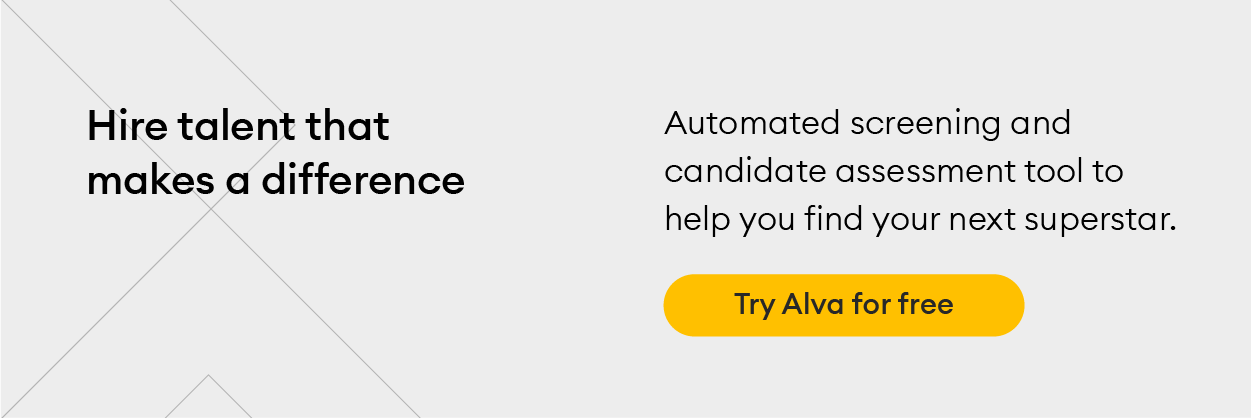Why time to hire is critical for hiring the right candidate
Time to hire measures the days between an applicant entering the recruitment funnel and accepting the offer. It's one of the most important recruiting metrics to track, along with hiring velocity and quality of hire.
Why? Simply put, taking too long to fill a role increases your cost per hire, and heightens the risk of losing high-calibre candidates. In a job market where 57% of applicants lose interest if the recruiting process is long, it's essential to keep your recruitment process running like a well-oiled machine.
Overall, your time to hire metric says a lot about your recruitment process's efficiency.
- A long time to hire: this is a sign that your recruitment process is slow and has unnecessary bottlenecks.
- A fast time to hire: means you've optimised your recruitment funnel and are working efficiently to find the best talent. This leads to a better candidate experience and decreases the chance of a candidate dropping out of the funnel.
Tips on improving your time to hire
#1 Start by tracking your time to hire
Image discovering that a hiring manager in your sales team spends an unusually long time interviewing SDR candidates. Or your interview process is so drawn out that several sales candidates drop out after the interview. These are common issues, and can quickly be addressed if you are tracking your time to hire.
How to calculate your time to hire: Go back to the first day you opened the position. If your candidate accepted the job offer on day 25 but applied on day 10 only, your time to hire would be: 25-10=15 days.
Tip: Remember to calculate your time to hire per team. So if a particular hiring manager is inflating your average time to hire, you'll be able to spot this immediately.
# 2 Host a great startup meeting
Hosting a startup meeting will significantly speed up your hiring process since you'll know exactly what candidate you'll need and how to assess them. You're also reducing the risk of "changing your mind" about a particular candidate later down the line, considering you have the role requirements in the blueprint.
Sit down with relevant stakeholders and discuss the following:
- ➡️ Why do you need this person?
- What skills will they bring to the table?
- ➡️ What does good look like in this role?
- How will they fit into the team?
- ➡️ What's the best and most efficient way to assess them?
During a guest appearance in Alva's How We Hire Podcast, Talent Acquisition Lead Grace Woods unpacked her tips and tricks for keeping Oneflow's time to hire down.
According to Grace, creating a streamlined recruitment process starts with a great startup meeting, where talent acquisition can align with hiring managers. She commented:
Today, Oneflow has grown from 15 to 180 employees. This is partly due to their openness to experimenting and tweaking their hiring process.
#3 Create a recruitment playbook
Hiccups in the hiring process frequently happen due to poor internal communication and limited oversight of the recruitment funnel.
This is where your recruitment playbook comes in. Serving as a roadmap of your entire end-to-end recruitment process, you obtain a bird's eye view of how you hire and how much time and resources you spend at each funnel stage. So whether you're interviewing candidates, providing feedback or running a retrospective, there's less chance for you to get derailed by a specific step.
#4 Invest in an ATS
An ATS enables hiring teams to automate repetitive, manual processes and, when used right, can vastly improve candidate communication. In fact, 78% of recruiters using an ATS report that it has improved the quality of the candidates they hire.
From scheduling interviews and keeping track of ongoing applications to talent pipeline building, a modern applicant tracking system is a vital resource to have in your corner, helping you reduce your time to hire.
#5 Keep your interviews concise and structured
When Grace Woods joined Oneflow as Talent Acquisition Lead, she realised just how long their interview process was, with some teams going through multiple interviews. Quickly she got to work, merging two interviews in one and tightening the feedback loop for interviews.
"It's worked amazingly well. And I think when you have a strong process, you don't need to meet the same person five times just to confirm what you already think the first time you've met them."
In addition, Oneflow uses detailed scorecards when evaluating candidates, particularly for their culture interviews.
#6 Be data-driven with your time to hire
Data enables you to identify potential bottlenecks in your hiring process, allowing you to fix things.
Imagine your time to hire for an engineering role is roughly 38 days-except for the previous three positions. You return to your assessment method and realise that your time to hire has spiked since you started using a new coding challenge. But has it led to a better quality of hire? If not, you need to review your coding assignment and ask yourself how effectively it's helping you to find the best candidate.
In addition, look at your conversion rates between recruitment stages and identify ways to improve your time to hire. For instance, if your candidates receive low interview feedback scores, you are probably spending too much time with the wrong candidates.
Tip: An effective way to screen candidates and lower your hiring time is to use candidate assessments. For example, Alva's candidate assessment tool helps you recruit faster, enabling you to spot the best candidates to engage with and shortlist for interviews.
Alva's candidate assessment tool includes the following:
- Personality test: Measure traits such as openness to experience, conscientiousness, extraversion, agreeableness, and emotional stability to understand how a candidate would perform on the job and interact with the team.
- Logic test: This tool assesses a candidate's problem-solving and critical thinking abilities, helping Talent Acquisition Managers to spot a candidate's potential to thrive in the role.
- Structured interview scorecards: Easily track how your candidates perform in interviews with detailed scorecards.
- Coding tests: Evaluate the practical engineering skills of your candidates with Alva's library of real-world coding challenges. The tests are created by industry experts from prominent companies like Stripe and Spotify, and work with any programming language and tech stack.
To wrap up
Time to hire is an important metric to monitor, particularly for hiring teams that are losing revenue and productivity for each day a seat remains empty. One of the most effective ways to navigate this is to be open enough to experiment and tweak your processes based on data.
For Oneflow, the results speak for themselves. A year after testing and tightening their hiring process, they’ve noticed how the people who’ve joined the company since they started are still with them today.






